To view entire content, please click on the titles and other hyperlinked text
For Women’s History Month I asked five of our women scientists to share a little about their science journey, what hurdles or obstacles they’ve experienced during their journey, how they overcame them, and what advice they might have for the next generation of women scientists. They're candid, honest and full of sage advice.
*In celebration of Women's History Month
2018-2019 Faces of the Northeast Fisheries Science Center
Q&A Series
Each month we will feature a new "face" from the Center's five laboratory locations: Orono, ME, Woods Hole, MA, Narragansett, RI, Milford, CT, and Sandy Hook, NJ to share with you a bit about who they are, what they do at the Center, and what they enjoy doing in their spare time. Questions include:
Where did you grow up?
Where did you go to school and what did you get your degrees(s) in?
Tell us a little about how you came to the Science Center?
What do you do at the Science Center?
What you like most about your position?
What are some of your hobbies?
Highlighting the Cooperative Shark Tagging Program for Shark Week*
July 21, 2019
The Northeast Fisheries Science Center’s Cooperative Shark Tagging Program continues to shape what the world knows about sharks.
* In celebration of Shark Week, includes shark tagging program infographics
Tracking Our Region’s Marine Heartbeat
9 Things You May Not Know About the Northeast Ecosystems Monitoring Survey
June 26, 2019
The Ecosystems Monitoring Survey (#EcoMonSurvey) is a seasonal shelf-wide survey that collects environmental and plankton data from the Gulf of Maine to North Carolina. Data from the survey are used by scientists and stakeholders in our region and internationally. Applications range from estimating fish spawning stock biomass and biodiversity, to monitoring changes in the physical marine environment and estimating food available for marine mammals, fish, and seabirds. Long-term monitoring surveys such as EcoMon are like routine blood-pressure checks you get at the doctor’s office. We’re keeping our fingers on the pulse, tracking our region’s marine heartbeat.
2019 Maine Fishermen’s Forum: Together We Achieve More
February 26, 2019
The Maine Fishermen’s Forum is an annual gathering of commercial fishermen, gear suppliers, scientists, government representatives, and other stakeholders to talk about Maine’s commercial fishing industry, markets, technology, safety, and more. Scientists from the Northeast Fisheries Science Center and staff from the Greater Atlantic Regional Fisheries Office participate in the Forum to collaborate and share information about Maine’s marine resources and more.
Helpful Tips from Industry Partners for Buying and
Cooking Seafood during the Holidays
December 20, 2018
Hooray for the holidays! For many, the holiday season means family, friends, and of course, food. Spicing up your holiday menu with fresh, sustainably-harvested seafood is a great way to treat yourself and the ones you love. If you don’t buy and cook seafood regularly, fear not! We’ve invited some of our fishing industry partners to share their best tips for buying and cooking locally available seafood during the holidays.
*This piece features tips for buying and cooking seafood from our industry partners and their associated chefs. Industry partners include aquaculture farmers that work with our aquaculture scientists, and commercial fishers who participate in our cooperative research and research set-aside programs. Connecting the dots further, I included regional chefs connected with our industry partners. This piece is styled after content like this Food Network Holiday cooking tips piece and this Consumer Reports Black Friday shopping tips piece created to help guide their audiences to save time, be less stressed, and quickly solve holiday-related problems.
Five Smartphone Wallpapers that Will Warm Your Heart This Holiday Season
December 10, 2018
Every smartphone comes with a selection of wallpapers -- backgrounds for your home and lock screens -- that give our phones a bit of personality. Sometimes they simply don't reflect our spirit, a season or a favorite holiday. Not to worry, we’ve got you covered! Enjoy these fun and festive wallpapers that blend the marine life of our region with the holiday season. Download your favorite today!
*This piece uses the Holiday season as a marketing opportunity to highlight NOAA and Center science, our research and programs, and regional ecology while giving the public images to use on their smartphones. This feature gallery includes:
Downloads for Android and iPhone use as well as original images
Biological, ecological, and interesting information about each organism
Links to related content or programs
Spooktacular Smartphone Wallpaper Gallery
October 31, 2018
You’ve decorated your home, you’ve picked out your costume, and now you can decorate your smartphone! Enjoy these 13 ghoulishly creepy images especially curated to use as wallpaper for your smartphone. Download your favorite today!
*This piece uses Halloween as a marketing opportunity to highlight our Center’s science, research, and programs while giving the public images to use on their smartphones. This feature gallery includes:
Downloads for Android and iPhone use as well as original images
Biological, ecological, and interesting information about each organism
Links to related content or programs
2018 International Council for the Exploration of the Sea
Annual Science Meeting Special Feature
Q&A: Researching Electronic Monitoring Tech Applications in the
Mid-Water Trawl Herring Fishery
September 26, 2018
We sat down with Nichole Rossi, Fisheries Biologist and Electronic Monitoring Lead from our Fisheries Sampling Branch, to talk about her Electronic Monitoring (EM) presentation, why we’re exploring EM as a commercial catch monitoring and reporting tool, and what some of the successes and challenges have been in monitoring catch retention in Atlantic herring and mackerel mid-water trawl fisheries in the waters of the Northeastern United States. Questions included:
Why is NOAA Fisheries exploring EM?
You conducted a pilot study in collaboration with Saltwater Inc. to evaluate the utility of EM for documenting catch retention in high volume fisheries like Atlantic herring and mackerel. What were some of the major findings of the pilot study?
What is a full release slippage event and how can EM be effective in detecting and categorizing these events?
You found EM effective in detecting and categorizing catch discarded after being brought onboard, but reviewers had difficulty consistently differentiating between operational discards and partial release slippage events. Why did they have difficulties and what can be done to help reviewers differentiate them in the future?
Anything else you want to share about this project and your findings?
2018 American Fisheries Society Special Features
Valuing Shellfish Beyond the Market
August 22, 2018
Valuing Shellfish for Nitrogen Removal
“The whole idea of this study was to really think of a more comprehensive and inclusive way to value shellfish resources in coastal communities beyond just the value of the commodity itself, what else is important to communities, and how do you place a number on that,” said Mark Dixon, biological science technician at the Milford Lab. To understand shellfish resources, Dixon and his Milford colleagues began a pilot study in Greenwich, Connecticut. Their goal was to develop a multidisciplinary approach to valuing shellfish resources in coastal communities. It focused on ways to assign value to the nitrogen removal capabilities of shellfish and the socioeconomic value communities place on shellfish resources. They did this by:
Calculating nitrogen removed when shellfish assimilate the nutrient into their tissue and shell as they grow
Comparing the nitrogen removed by shellfish to the amount of nitrogen coming from Greenwich sources, which University of Connecticut research scientist Jamie Vaudrey and her colleagues modeled for all Long Island Sound coastal municipalities.
Collaborating with Anthony Dvarskas, resource economist and professor at Stony Brook University, to calculate the value of nitrogen removal service
Building trust and relationships with the Greenwich Shellfish Commission and Greenwich aquaculture industry partners
Could Offshore Wind Energy Construction Affect Black Sea Bass Behavior?
August 21, 2018
Black sea bass (Centropristis striata) live along the East Coast of the United States, from Maine to the Gulf of Mexico. They’re an ecologically and economically important fish supporting a valuable commercial and recreational fishery. Black sea bass are attracted to structurally complex habitats and are often found around rocky reefs, cobble and rock fields, mussel beds, artificial habitats (e.g., marine debris, shipwrecks), and other similar types of three dimensional structures. Unfortunately, existing energy leases and areas planned for wind energy development overlap, either seasonally or throughout the year, with many of these habitats. Commercial and recreational fishermen have expressed concern about how the sounds associated with offshore wind development might impact black sea bass. Construction of offshore wind farms relies on pile-driving, which emits high intensity, intermittent impulsive sounds found to trigger stress responses in other fish species. That’s why Katharine Shelledy, junior acoustician at the Science Center, and her colleagues are looking at how offshore wind energy construction sounds might affect black sea bass behavior.
The Rise of Machines: Using CNNs to Help Estimate Skate Abundance
August 20, 2018
When the Conventional Won’t Work
Stock assessment scientists provide high-quality science information to resource managers to answer important questions about current stock status, how much catch is sustainable, and what steps are needed to rebuild depleted stocks. Conventional stock assessments require certain kinds of data including catch -- the removal of fish from a population by fishing and fishing bycatch. Fishermen in the northeast encounter 7 skate species, but the majority of catch is simply reported as “skate,” making it nearly impossible to effectively estimate absolute abundance and biomass by species. Essentially, we’re catching skates without knowing how many skates are out there, and we may be disproportionately fishing a certain species. This is particularly concerning when there’s a large, thriving fishery for skates, particularly winter skates (Leucoraja ocellata).
How can stock assessment scientists generate reliable estimates for absolute abundance and biomass for skate species? Scientists at our Science Center are collaborating with computer scientists at Kitware to solve this problem using images taken from the Science Center’s annual sea scallop HabCam surveys and a high-tech machine learning using trained convolutional neural networks (CNNs).
Celebrating Oceans as Part of NOAA's #OceansMonth and
#WorldOceansDay with Fun Online Quizzes
June 2018
Everybody loves online quizzes! Why else would people's social media accounts be flooded with quizzes created by How Stuff Works, Buzzfeed, and others if we didn't secretly love them. The simple truth is that they're addicting. I created a series of online quizzes using #OceansMonth and #WorldOceansDay themes to highlight and share the Northeast Fisheries Science Center's research, scientists, and key messages. It's fun, try it and you'll see.
Week 1: Marine Mammals
Week 2: The Wonderful World of Marine Invertebrates
Week 3: Sea Turtles (overlaps with #SeaTurtleWeek)
Week 4: Ocean Processes
Week 5: Fish and Sharks
21 Migratory Fish Facts That'll Make You Say, "I Never Knew That!"
April 20, 2018
Saturday, April 21 is World Fish Migration Day -- a day to create awareness about the importance of open rivers and migratory fish. To celebrate World Fish Migration Day we’re sharing a collection of migratory fish fact that’ll make you say, “I never knew that!” From river herring and Atlantic salmon to rainbow smelt, even the most die-hard fish fans will learn something new.
Includes video that I edited
*In celebration of World Fish Migration Day
The Twelve Days of Fishmas
December 2017
This piece celebrates the holiday season with a little science, humor, and a dash of pastiche! I created a musical work that imitates another more famous musical work -- the English holiday carol “The Twelve Day of Christmas.” “The Twelve Days of Fishmas” started on December 14 and highlights some of the research studies, methodologies and techniques, and equipment from around the Center. Each day a new line and related content would be added.
On the twelfth day of Fishmas our Center gave to thee...
Twelve Niskins sampling,
Eleven filters clogging,
Ten drifters drifting,
Nine degrees a-shifting,
Eight minute recordings,
Seven days a-tagging,
Six loggers logging,
Five acoustic pings,
Four spawning cohorts,
Three smolt releases,
Two measuring boards,
And estimates of fish fecundity
Includes videos I edited.
Understanding Atlantic Salmon Smolt Behavior and Survival
When Every Smolt is Sacred
November 9, 2017
It’s hard to imagine science without technology and as technology advances, scientists can do research and follow lines of inquiry that would’ve been difficult if not impossible to do in the past. Acoustic telemetry – the use of transmitters and receivers to track animals – is a technology that has not only become more sophisticated over time, but it’s also allowing fisheries scientists from our Orono Lab to answer questions about Atlantic salmon (Salmo salar) smolt behavior and survival that would have been incredibly challenging just a short time ago.
Every Smolt is Sacred
Many of the Atlantic salmon populations within the southern part of the species’ range are critically low, while other populations have been extirpated. Because Atlantic salmon smolt survival in the marine environment is consistently low, current restoration efforts focus on a “numbers game”: get as many smolts to the ocean as possible. To successfully do this, scientists must first understand smolt behavior and survival. This past spring research fishery biologist Jim Hawkes and others from our Orono Lab tagged 202 hatchery-raised Atlantic salmon smolts with small transmitters to better understand smolt behavior and survival in Maine’s Narraguagus River. “The questions we wanted to answer were specific to migration ecology - how fast [are smolts moving], where did they go, what were their behaviors, and if they died, where did they die. If they died, could we relate that with time of day? If there were losses, were they in the same location?” said Hawkes.
* In celebration of Technology Week
Fun Facts about the Sand Star Astropecten americanus
October 31, 2017
Sand Stars (Astropecten species) includes over 100 species worldwide.
Astropecten americanus are a common invertebrate species in the Mid-Atlantic Bight and Southern New England waters, often found in very high densities in about 300 to 820 feet of water.
All Astropecten bury themselves using a combination of pointed tube feet and spines that help push themselves down into the sand.
All Astropecten lack an eversible stomach like other sea stars, instead they swallow small invertebrate prey whole.
Astropecten americanus are also scavengers – scientists in our Population Dynamics Branch have found fish bones and scales in their stomach, and even insects!
Prey found in Astropecten americanus stomachs include commercially important species like juvenile sea scallops and ocean quahogs, although sea scallops are rare in the areas where Astropecten are most often found.
Astropecten americanus may be expanding their range, now being found farther north and inshore.
Includes video of Astropecten americanus feeding
Six Spooky and Odd Science Stories to Keep You Up at Night
October 31, 2017
We asked our scientists to share their spooky, weird, scary and odd moments that happened while they were conducting research. From disembodied whispers to shadows and reflections, their stories do not disappoint! Enjoy reading their stories...if you dare.
Disembodied Whispers
Beth Phelan is a Research Fishery Biologist and Chief of the Ecosystems & Aquaculture Division's Fisheries Ecology Branch, and is based out of our Sandy Hook Lab
In 1985, the old army hospital built in the late 1890s was part of our Sandy Hook lab. During that time we were conducting bluefish research in that building and staff members working the night shift would record fish swim times each hour to ground truth video recordings documenting swimming behavior. I had only been working at the lab a couple of months when I was asked to participate in this research. My office was on the first floor and the door to enter the research aquarium was in the basement. Connecting these two areas was a set of stairs to the basement, but to get there meant passing a large staircase to the second floor. I started hearing what I thought was whispered voices coming from upstairs – not every time I passed the large staircase, and not always clearly. I ignored it, thinking that I maybe imagined it. By midnight, I had decided to just stay in the basement aquarium room and sleep on the old hospital couch rather than walk through the building and past the large staircase. Since I was new and wanted to keep my job, I continued sleeping in the basement whenever I had to work the night shift, about once every six weeks. That was until the lab building burned down in September of 1985. Scary thing was, an arsonist had lit the fire on the night I was supposed to work. I fortunately had switched my shift to another night. After the fire, when a coworker and I were scavenging equipment from the lab ruins, I remember thinking to myself, “Finally, the building will be quiet.”
Also includes:
Strange Flashes of Light from Vincent Guida is a Research Fishery Biologist in the Ecosystems & Aquaculture Division’s Habitat Ecology Branch, and is based at the Sandy Hook Lab in New Jersey.
Always Watching from Sarah Trudel was an aquarist for the Northeast Fisheries Science Center’s Woods Hole Science Aquarium in Woods Hole, Massachusetts.
Attack of the Parasitic Isopods from Eric Robillard is the Acting Chief of the Ecosystems Surveys Branch and a Supervisory Research Fishery Biologist for the Fishery Biology Program, and is based out of our Woods Hole Lab.
What Lurks in the Shadows from Laurel Smith is a Fisheries Biologist in our Ecosystems Dynamics & Assessment Branch (EDAB), and is based out of our Woods Hole Lab.
Phantom of the Deep from Jerry Prezioso is an Oceanographer in the Ecosystems & Aquaculture Division’s Oceans & Climate Branch, and is based out of the Narragansett Lab in Rhode Island.
Joining Forces to Understand the Impacts of Harmful Algal Blooms on Aquaculture
September 29, 2017
On September 17, 2017 Mark Dixon, Judy Li May, Shannon Meseck, and Gary Wikfors from our Milford Laboratory traveled to Brittany in the northwest of France to work with collaborators led by Dr. Hélène Hégaret of the Laboratoire des sciences de l’environnement marin (LEMAR Lab). This was part of a Galway Initiative project studying Harmful Algal Blooms (HAB) interactions with shellfish aquaculture. Harmful algal blooms produce biotoxins – poisons – normally in amounts too small to be harmful. While some biotoxins can be potent with only a small amount leading to illness or death, other less potent biotoxins may accumulate in fish and shellfish. This can cause serious harm, affecting human health and coastal economies. To help understand how HABs can impact shellfish aquaculture, the U.S.-French team conducted biodeposition-method measurements of oyster filtration, feeding, and assimilation at two sites where HABs occur seasonally. While no blooms were occurring at this time, the team collected baseline data and logistics to help with their HAB research in the future. We sat down with Gary Wikfors to learn about this important collaboration.
This is a Q & A style piece, questions include:
What are Harmful Algal Blooms (HAB)?
Why are oysters so important to France?
Why are HABs a concern for the aquaculture industry?
What is the connection between HABs and biodeposition?
Why is this kind of study important for the future of aquaculture?
Includes audio clips from interview
The Importance of Being Heard: Lessons in Communication from a
Stakeholder Driven MSE for Atlantic Herring
August 24, 2017
Scientists from the Northeast Fisheries Science Center (NEFSC) and others helped organize and facilitate a 2017 American Fisheries Society (AFS) symposium on stakeholder involvement in the management strategy evaluation process. Jon Deroba, fisheries scientist at NEFSC, presented his collaborative work on communicating with stakeholders during stakeholder driven MSE workshops at the symposium. This feature story is an extension of his presentation for AFS participants and those involved in fisheries science and natural resource management.
Stakeholder driven management strategy evaluation (MSE) is a collaborative decision-making process involving stakeholder input and technical analysis to help determine how a range of harvest control rules could affect fishery management objectives. In 2016, the New England Fisheries Management Council (NEFMC) approved the development of two MSE workshops to give Atlantic herring stakeholders the opportunity to provide input about their concerns regarding fishery objectives and control rule tradeoffs. One of the primary goals for this kind of inclusive MSE process is to foster open dialogue between resource users, scientists, managers, and other interested members of the public in a constructive and supportive environment. In May and December of 2016 scientists from the Northeast Fisheries Science Center (NEFSC) and others facilitated two sets of stakeholder driven workshops -- first ever for the region, and quite possibly the country.
Leveling Up: Improving EBFM with Rpath, an R Implementation of
Ecopath with Ecosim (EwE)
August 24, 2017
Scientists from the Northeast Fisheries Science Center (NEFSC) and others helped organize and facilitate a 2017 American Fisheries Society (AFS) symposium on advancing fisheries management strategy evaluation (MSE). Sean Lucey, fisheries biologist at NEFSC, presented his collaborative work on linking multiple Ecopath models using Rpath at the symposium. This feature story is an extension of his presentation for AFS participants and those involved in fisheries science and natural resource management.
Reproducibility, the ability to repeat another scientist’s research and get the same results, is at the core of science. It gives scientists confidence in research findings and allows them to build off of each other’s work, advancing both science and society. Scientists at the Northeast Fisheries Science Center (NEFSC) and Alaska Fisheries Science Center (AFSC) are making reproducibility, transparency, and full reporting easier for ecosystem scientists with Rpath, an R implementation of Ecopath with Ecosim (EwE).
Digital Media As a Research Tool*
June 29, 2017
A camera just isn’t a camera anymore. Yes, cameras still document our exciting times in interesting places with friends and family, but the digital landscape has definitely changed. Today we have cameras and smartphones with high resolution video and their ease of use, storage capacity, and distribution pathways are what makes them such a valuable research tool for scientists.
For decades scientists have been using camera and video systems to generate data used to answer all kinds of research questions. Here are just a few examples of how and why NEFSC scientists use cameras to answer big research questions. It’s said photos speak a thousand words. For scientists, they can create a thousand data points with just a click of a button.
Includes video I edited
*In celebration of National Camera Day
Diving Deep in Search of Juvenile Lobster Habitat
June 20, 2017
Interview with Burton Shank is a research fishery biologist on the Invertebrate Task Team in NEFSC's Population Dynamics Branch. In honor of Massachusetts Lobster Day, he answered a few questions about the NEFSC's lobster surveys. This piece includes audio clips of the interview. Questions included:
When and where was your recent lobster habitat survey?
Why did you conduct the lobster habitat survey?
What kind of data were you collecting and what will the data be used for?
What did you find?
Why is this information/data important?
Includes audio clips
Four Things You Can Do to Help Sea Turtles Every Day of the Year*
June 16, 2017
Marine megafauna like sea turtles can influence the health and function of marine ecosystems around the world. Some sea turtles are capable of migrating thousands of kilometers, transporting energy, nutrients, and other materials through several marine ecosystems along the way. As water temperature rises in the western Atlantic each spring, adult and juvenile loggerheads (Caretta caretta), leatherbacks (Dermochelys coriacea), greens (Chelonia mydas), Kemp's ridleys (Lepidochelys kempii), and even hawksbills (Eretmochelys imbricata) migrate northward towards important foraging and developmental areas. Because of migration, sea turtles encounter all kinds of environmental conditions and human impacts that can threaten their survival. Fortunately, we can help lessen our impact. By altering some of our behavior just a little, we can help protect and conserve our threatened and endangered sea turtles.
*In celebration of Sea Turtle Week
Prepare for Takeoff: A Photo Essay
May 9, 2017
The North Atlantic right whale population remains endangered and with human interactions rising, regular monitoring and documentation of their presence is crucial for their survival. Each spring many right whales journey from their calving grounds along the southern U.S. coast to their feeding grounds in the northwest Atlantic. Using NOAA’s Twin Otter airplanes, the Northeast Fisheries Science Center’s North Atlantic Right Whale Sighting Survey team is well situated to monitor right whales while they feed on zooplankton and small crustaceans in the northwest Atlantic. What goes into the logistics of making these surveys happen? Here is a behind-the-scenes look at some of the logistics involved in an aerial survey designed to help protect an endangered species like the North Atlantic right whale.
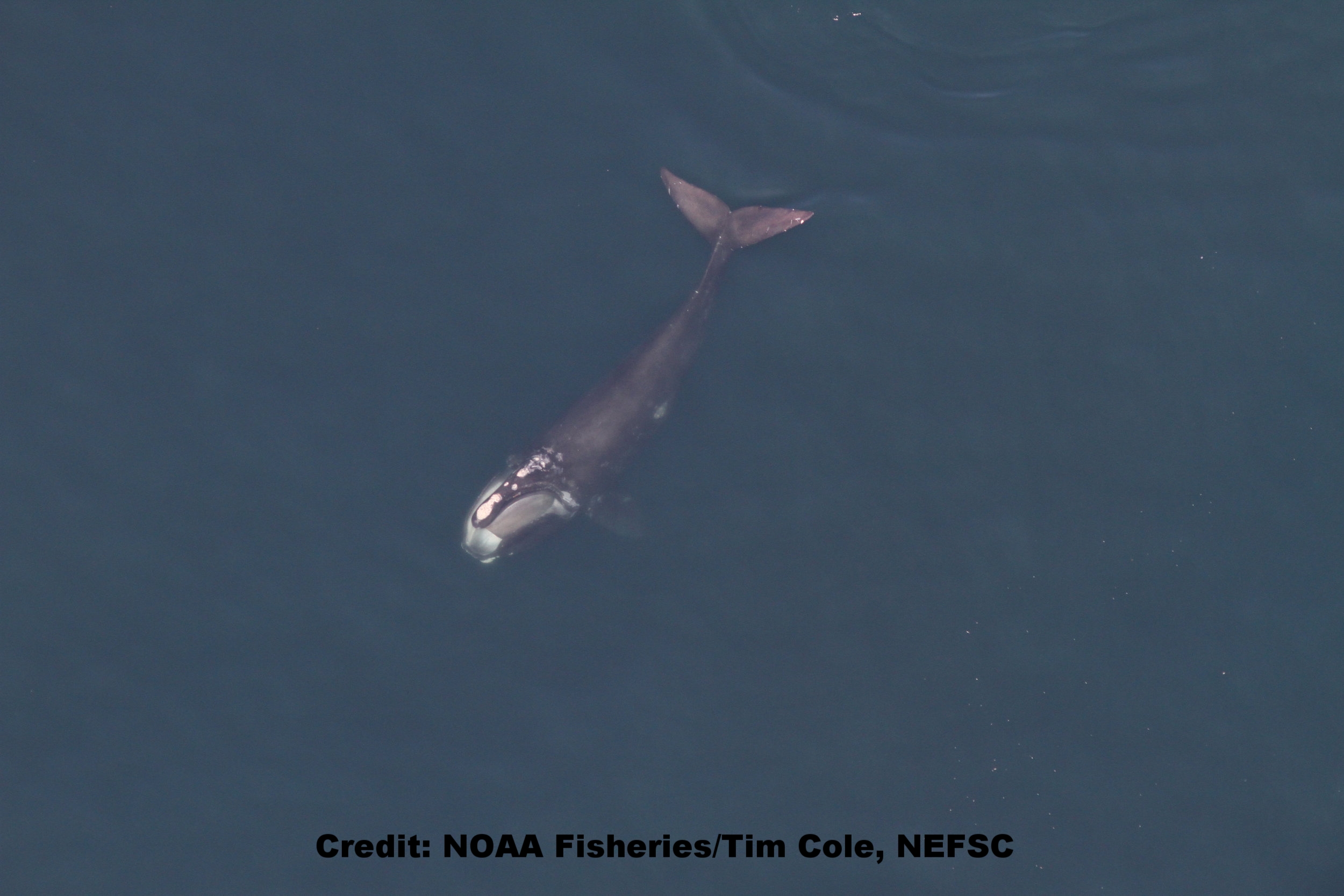

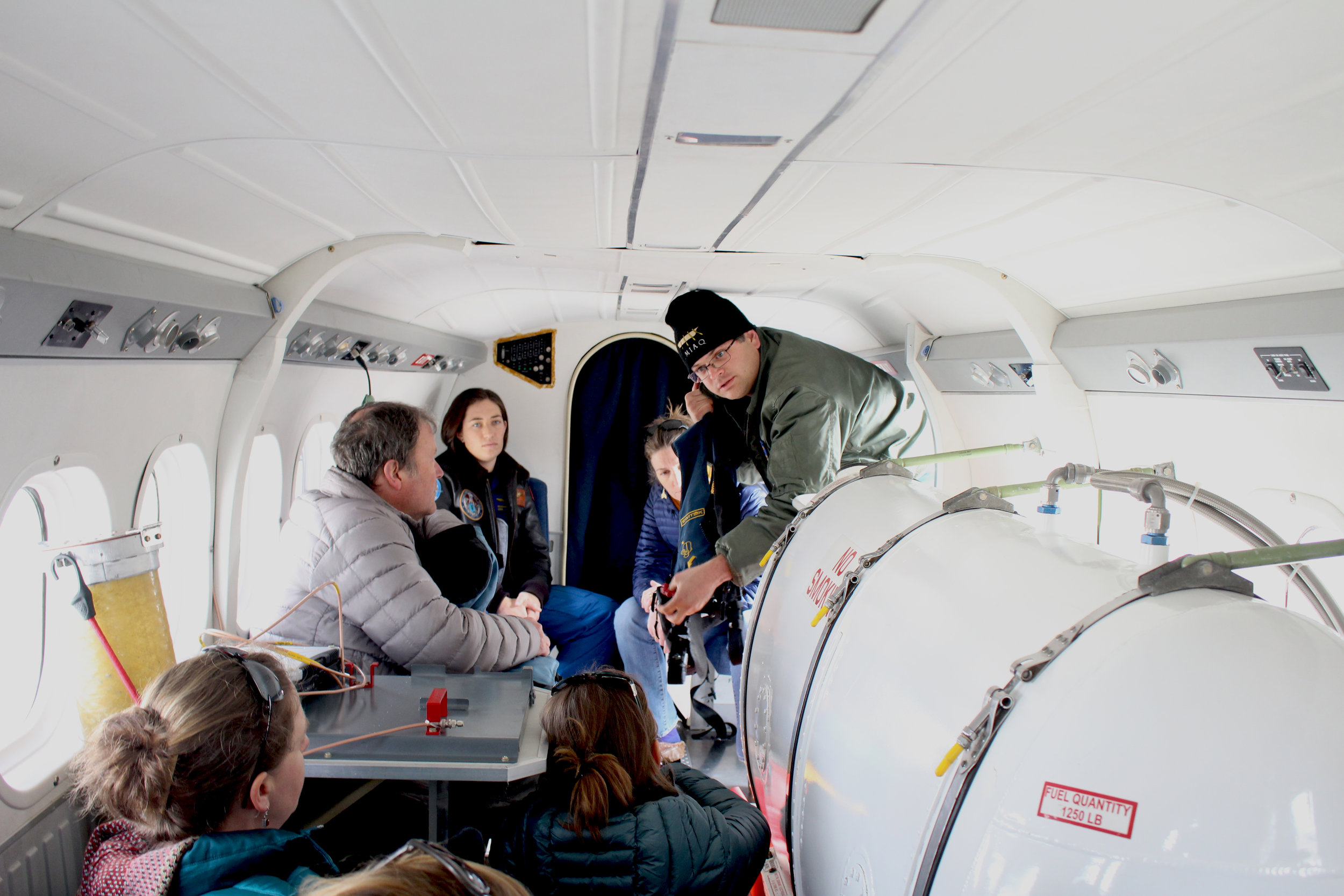
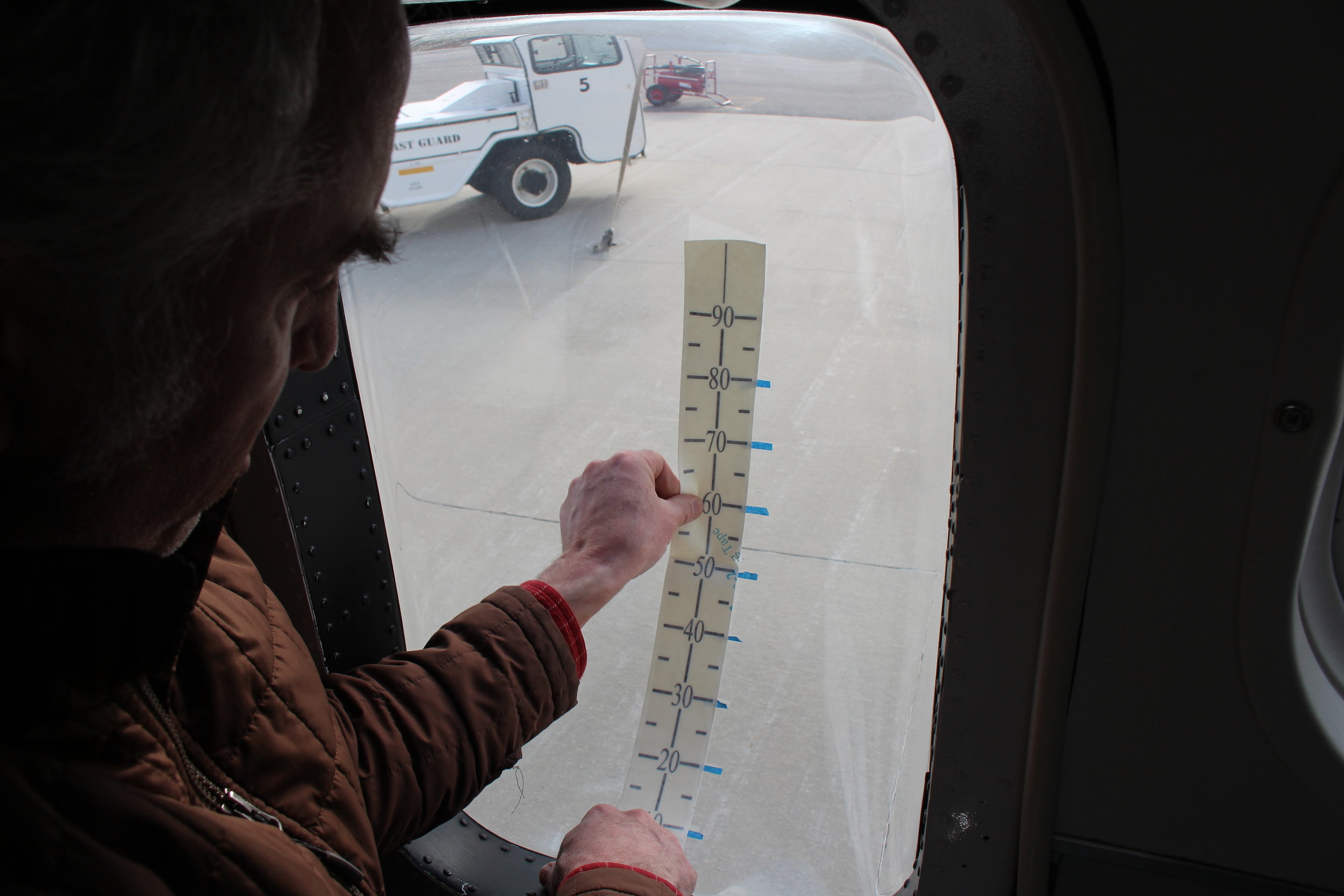
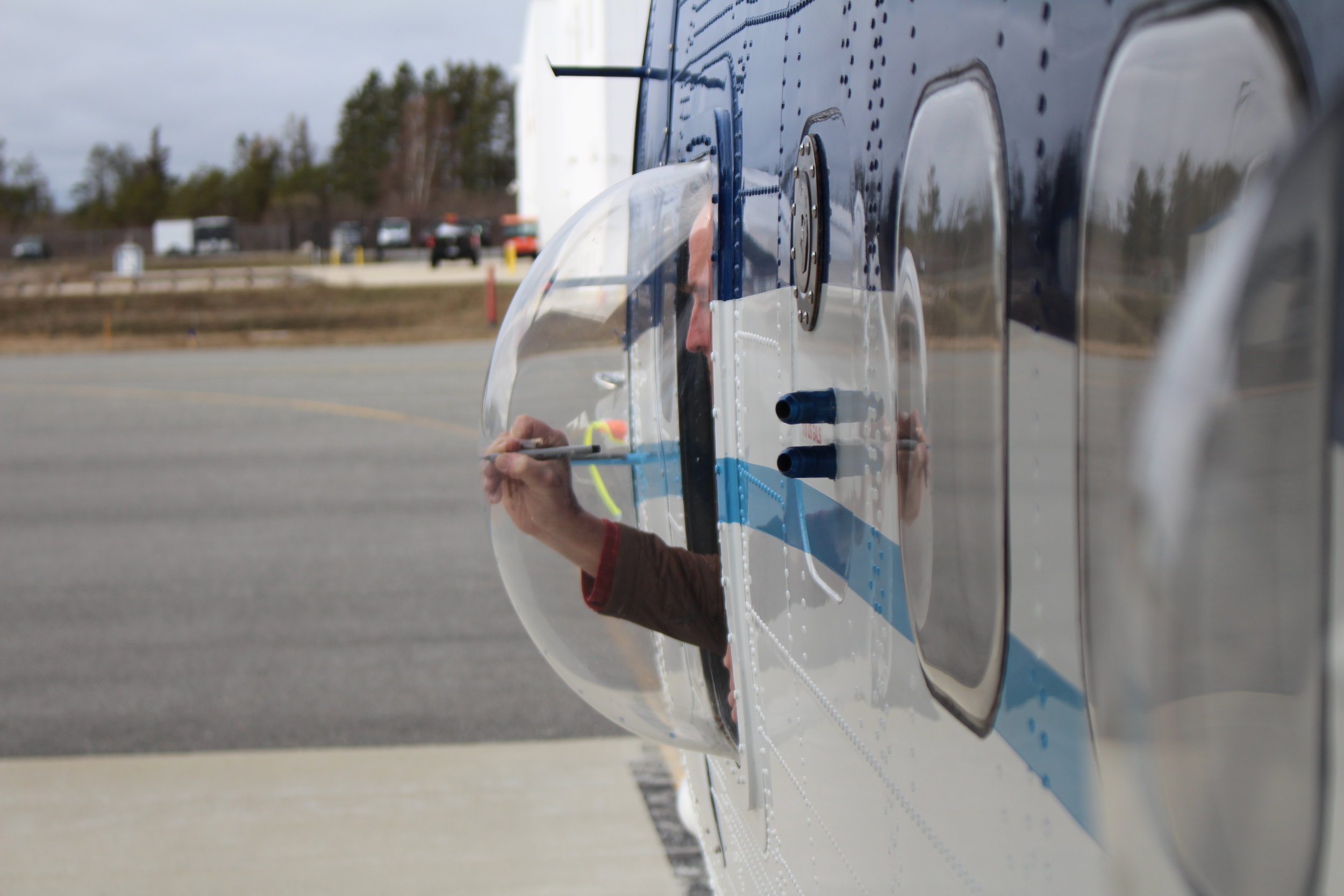
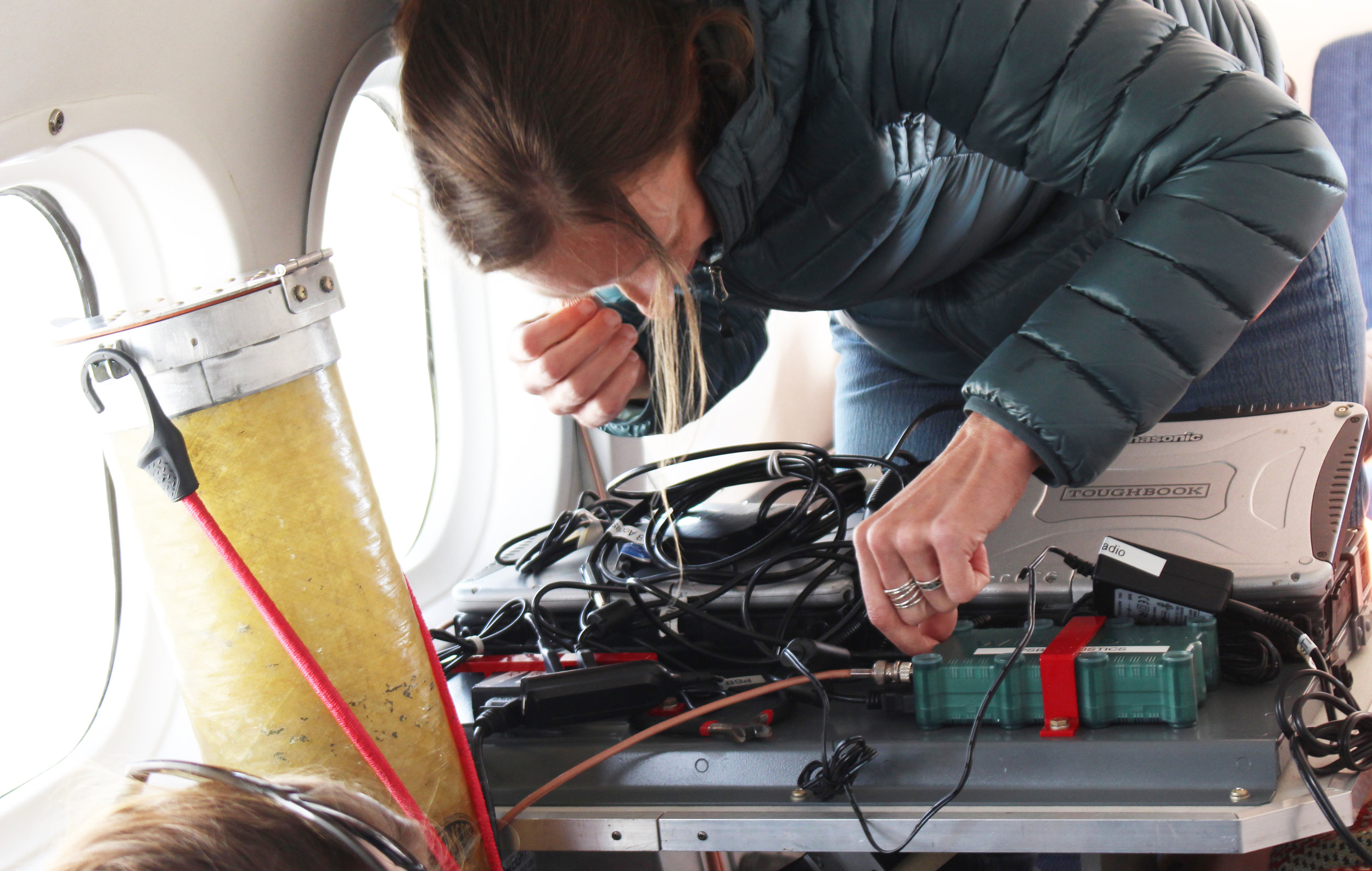
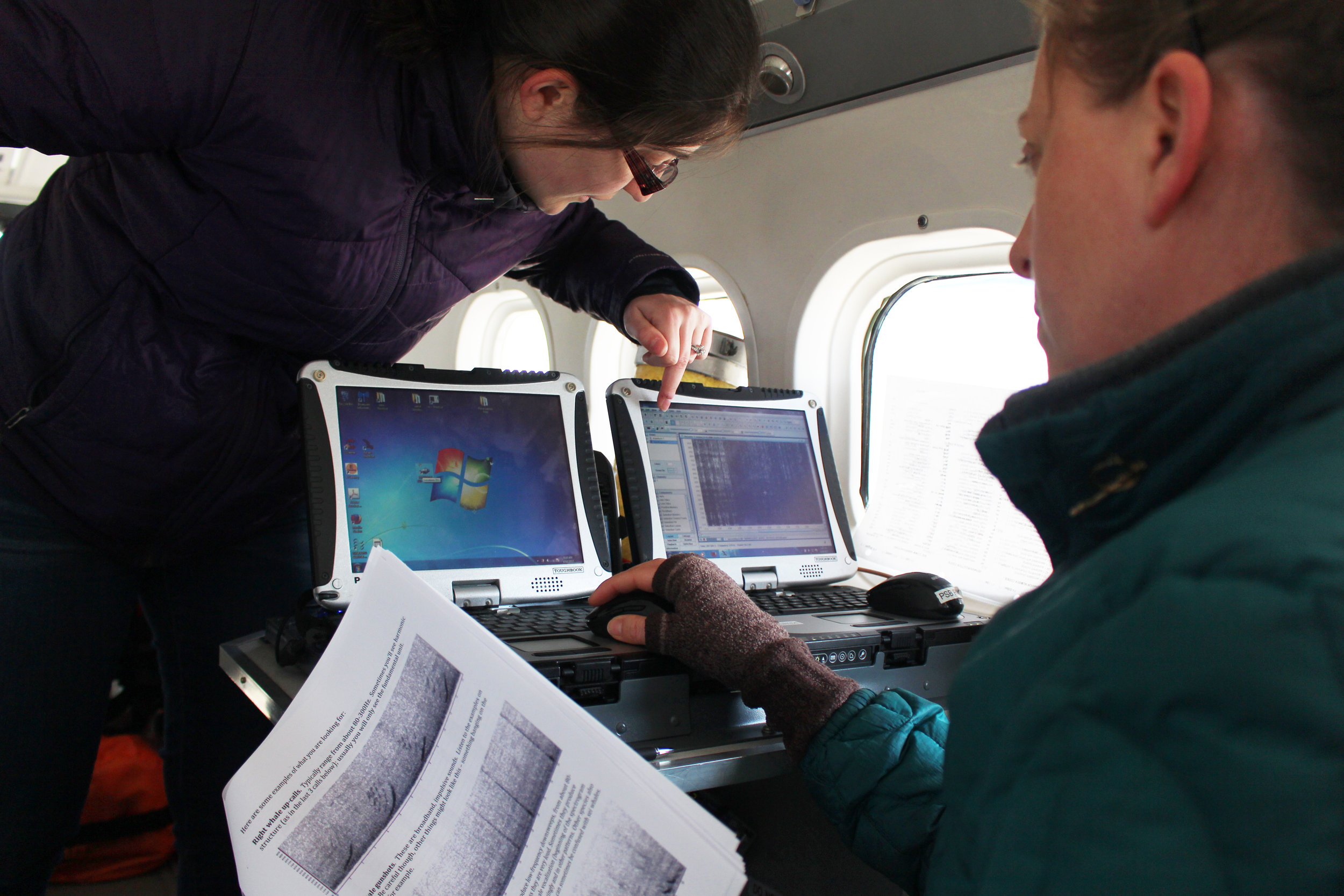
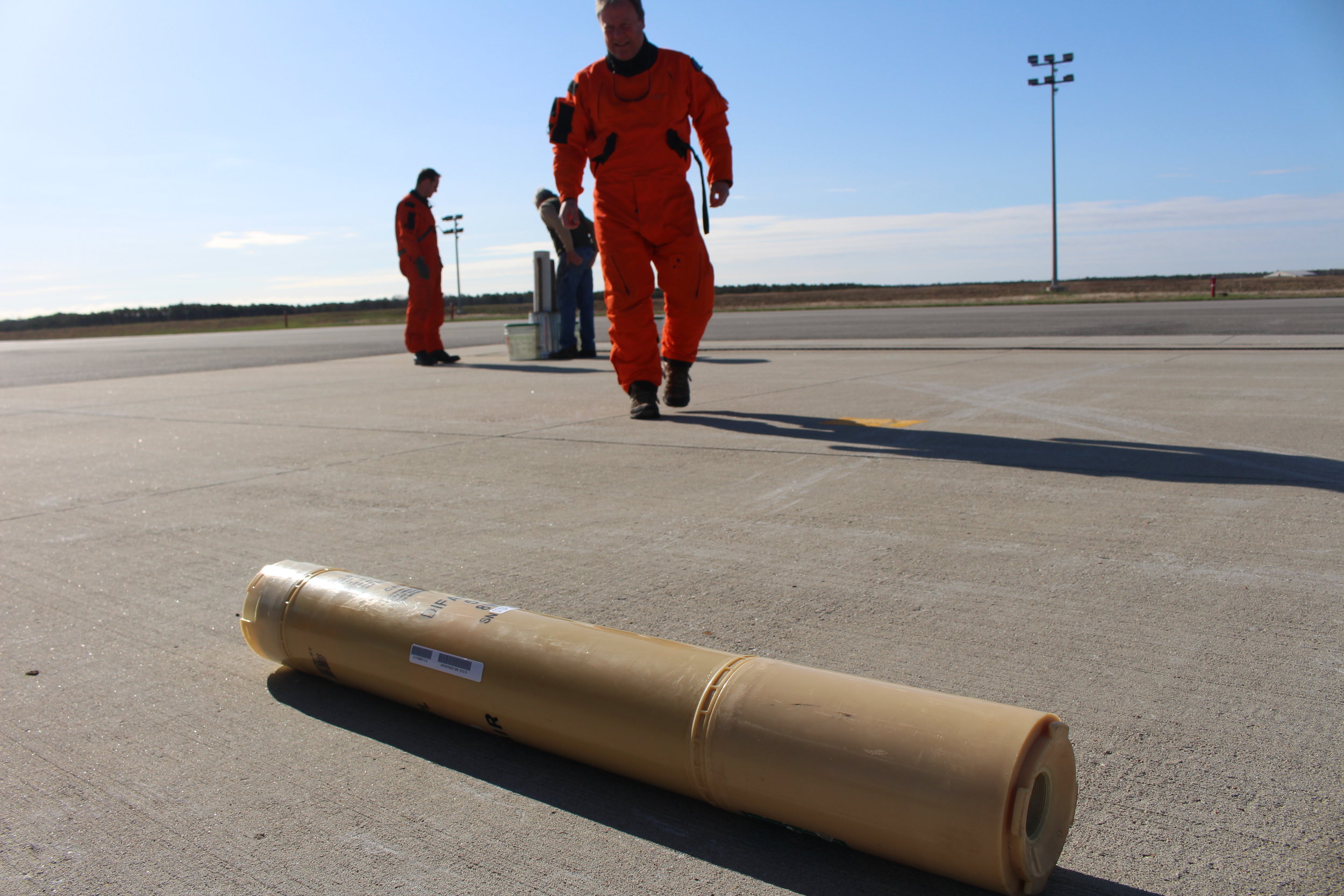
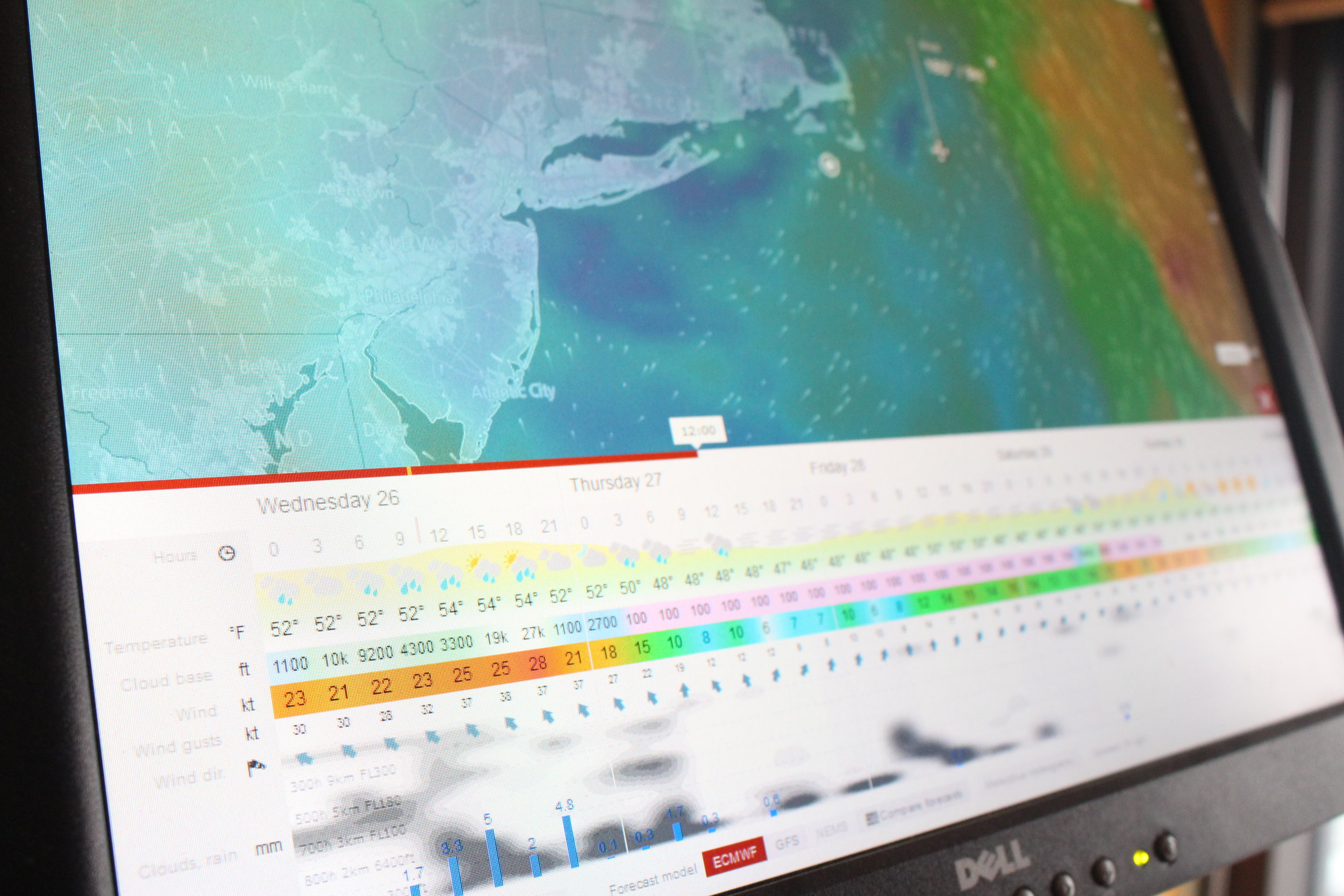

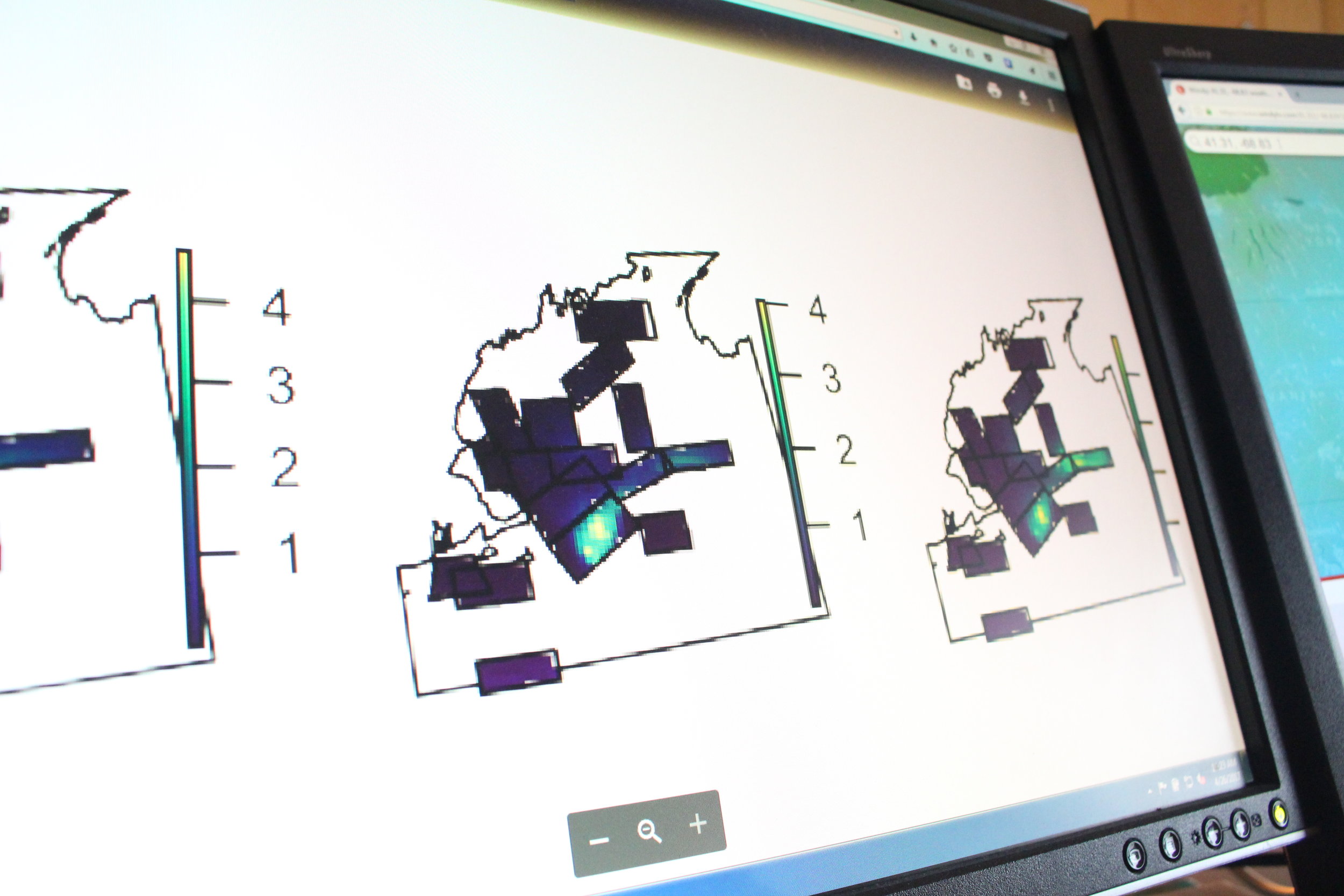
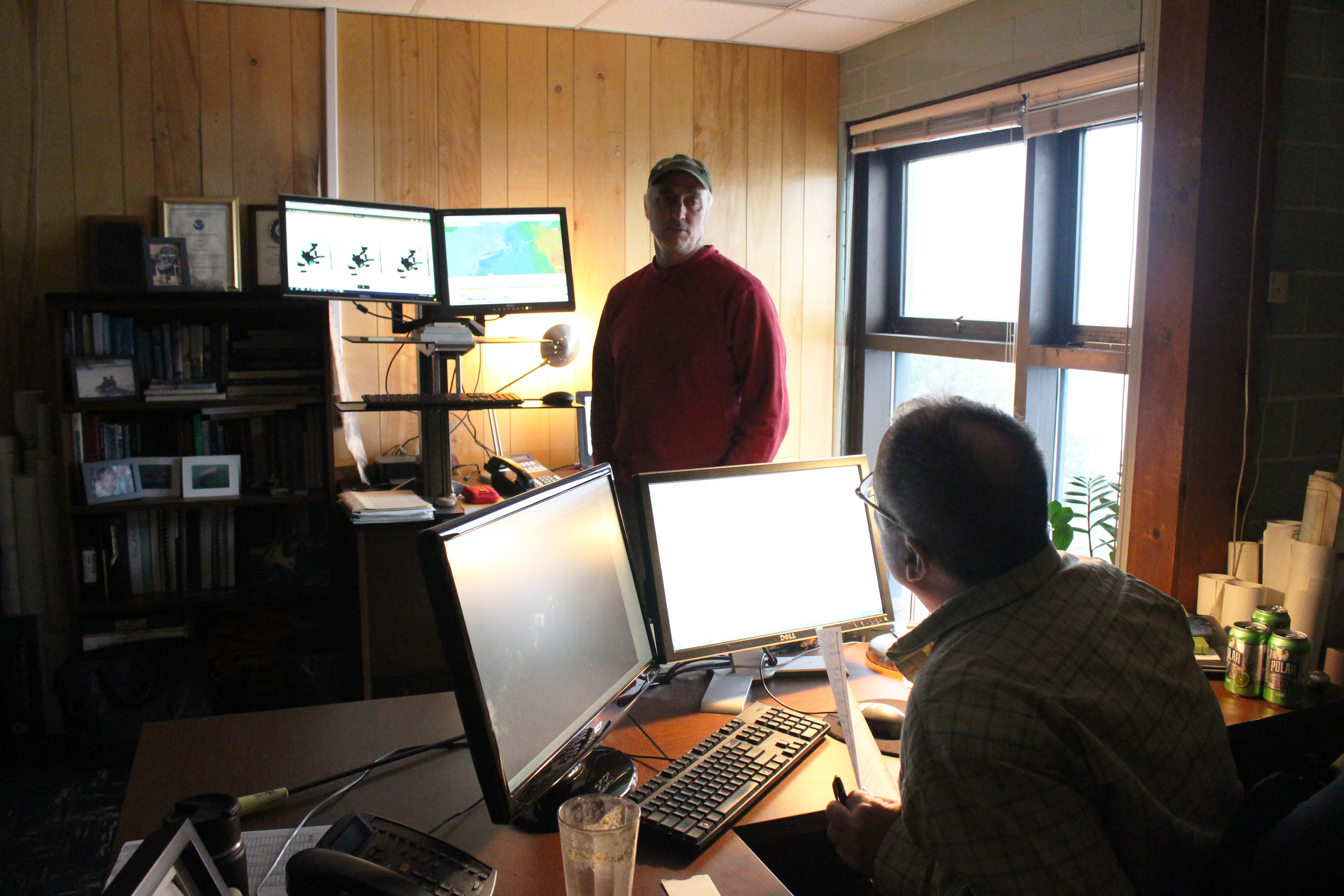
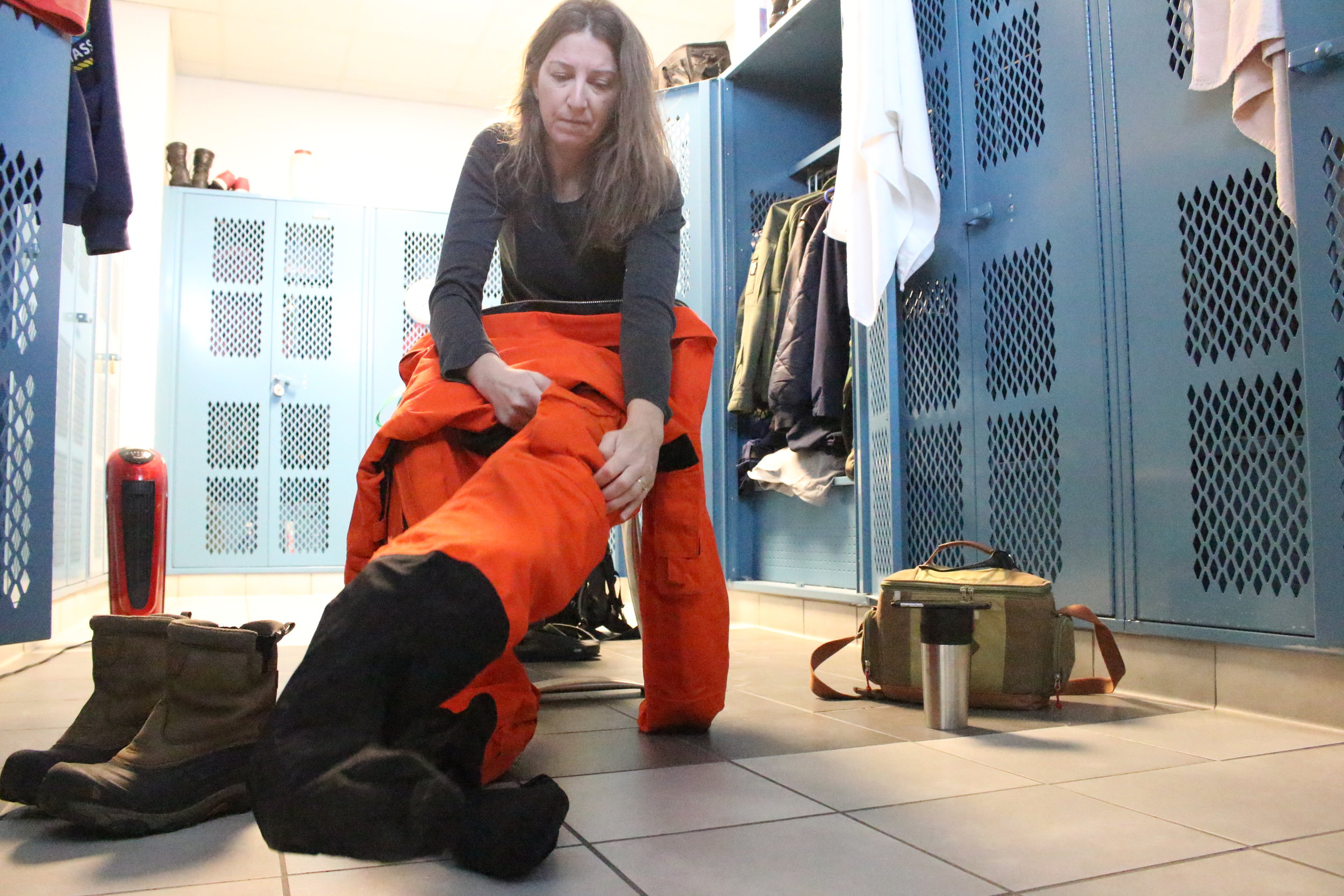
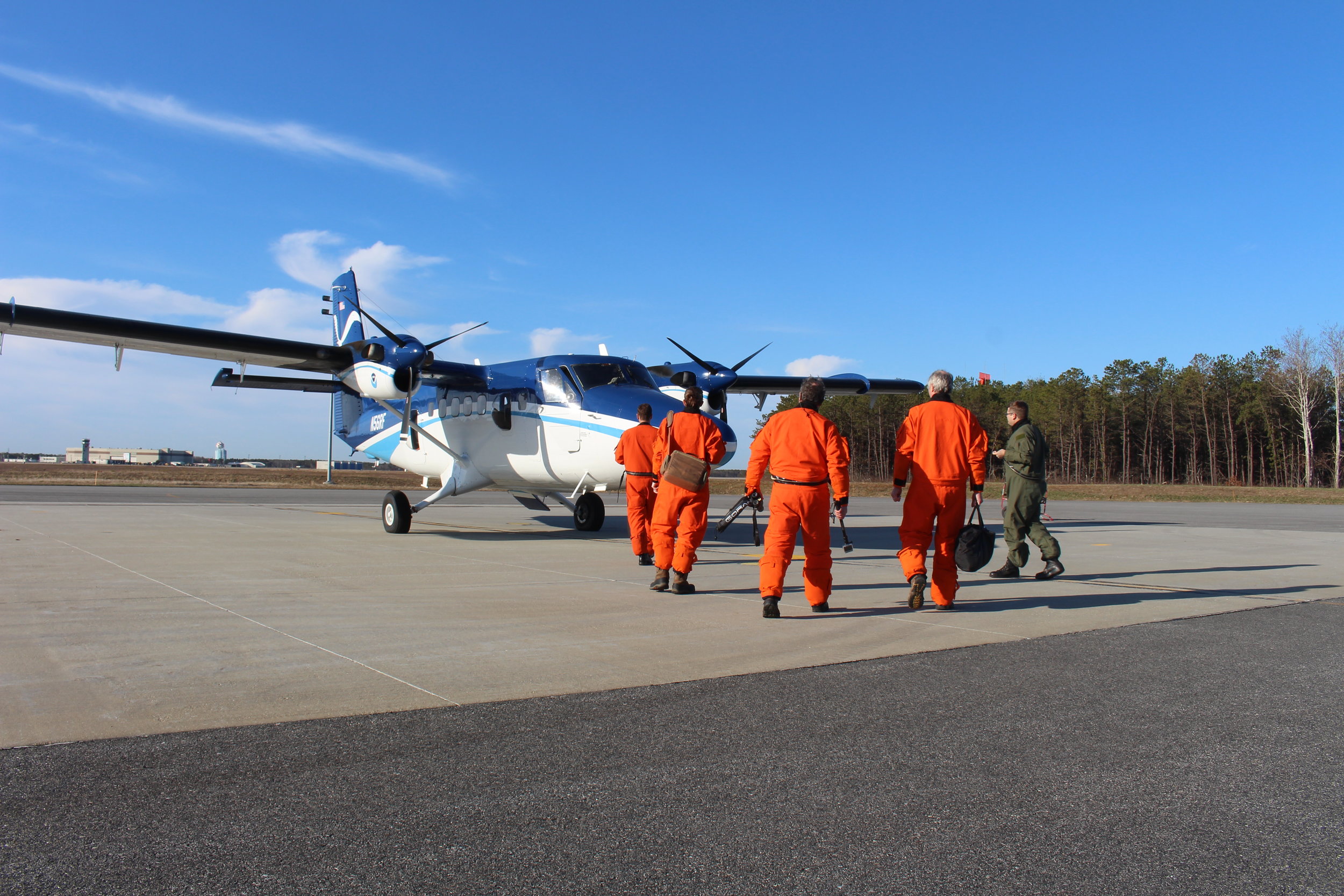
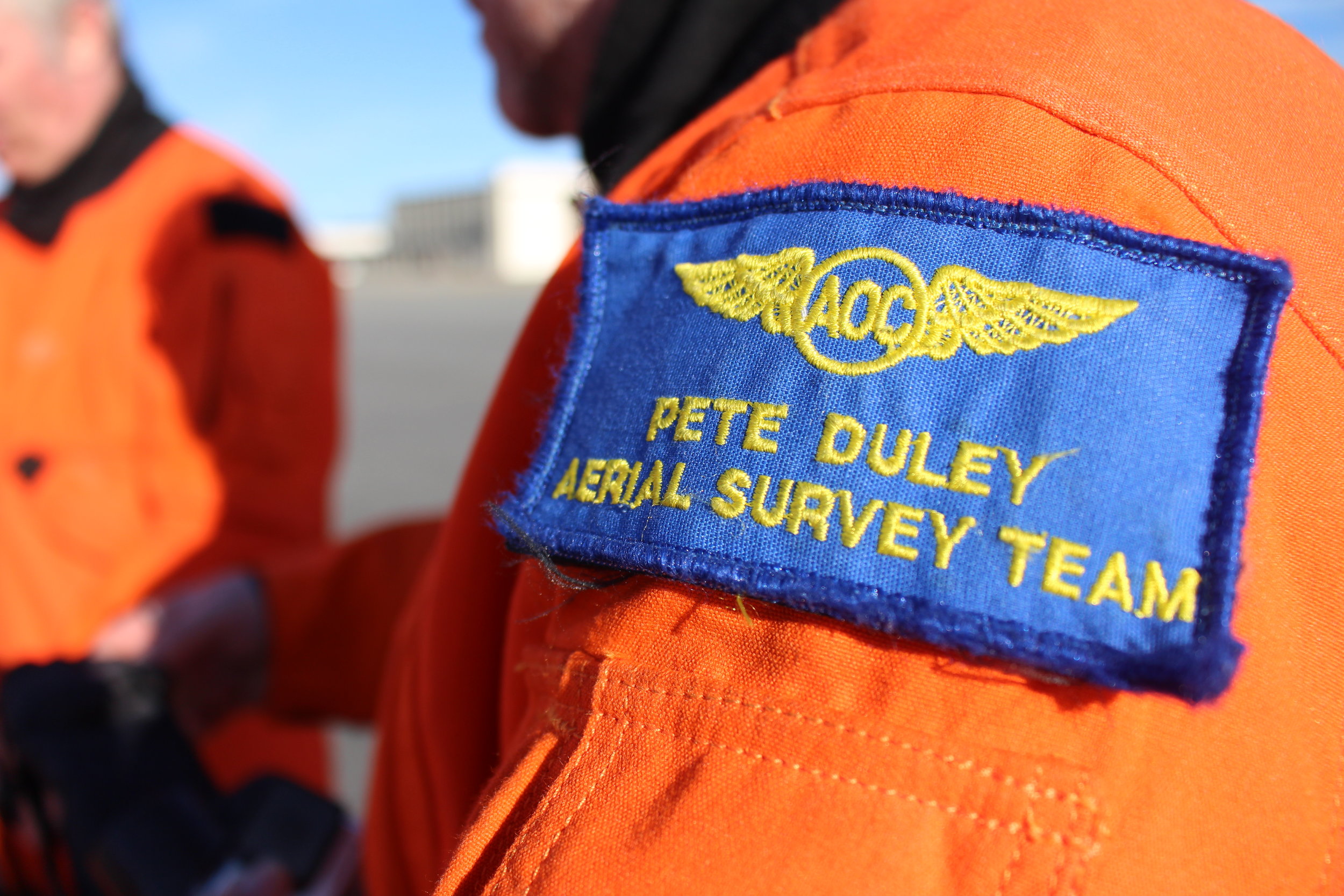

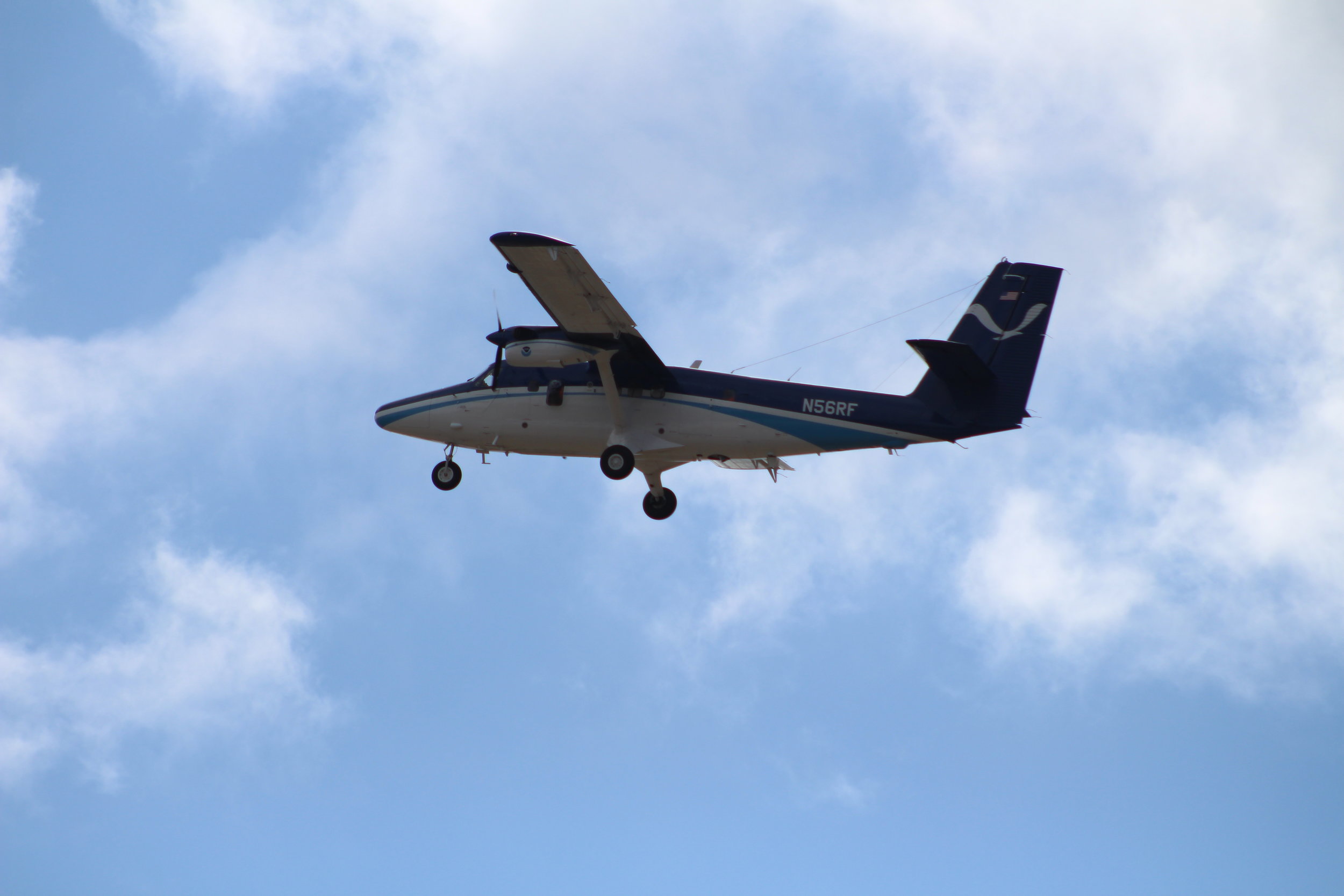
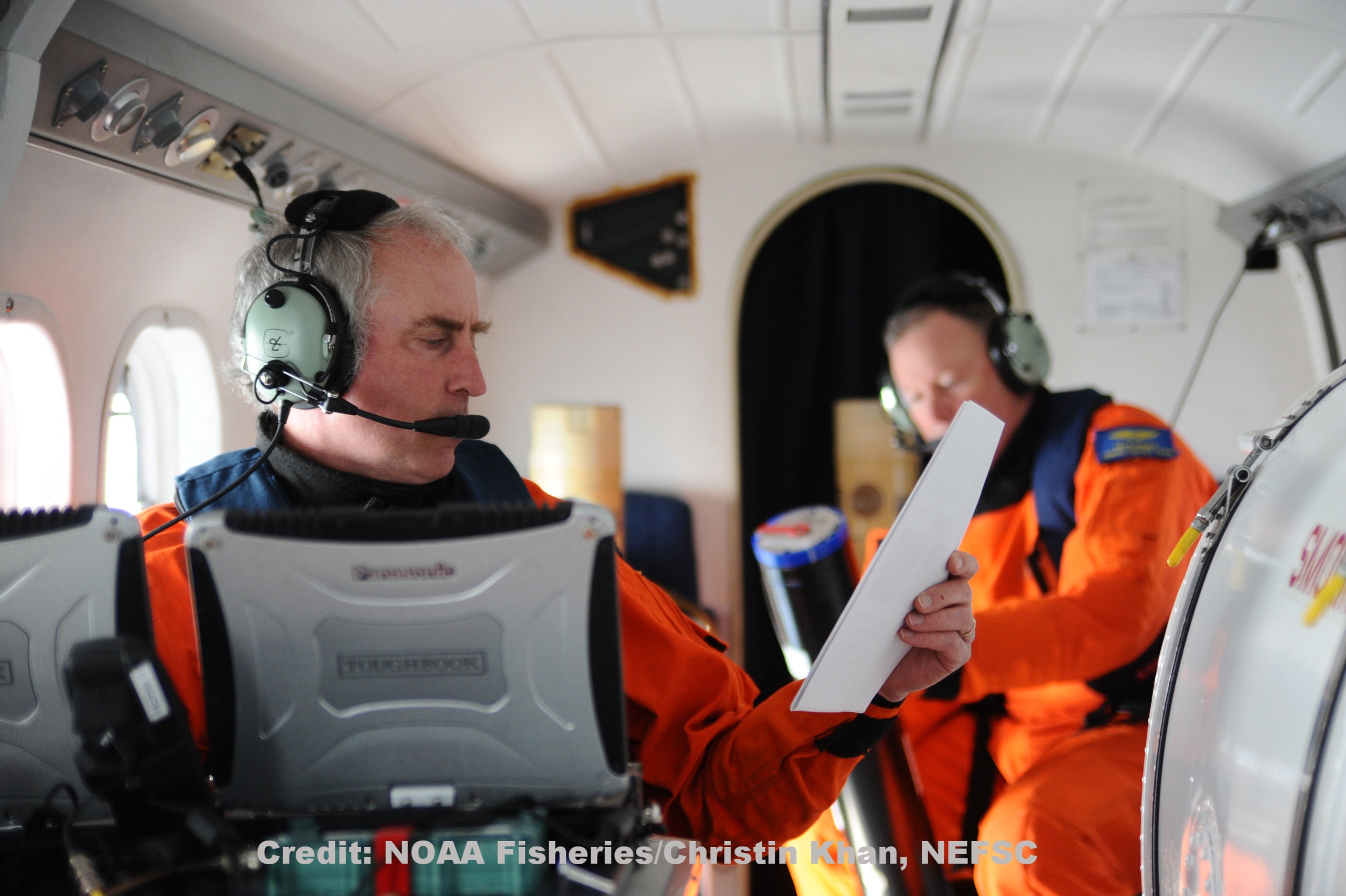
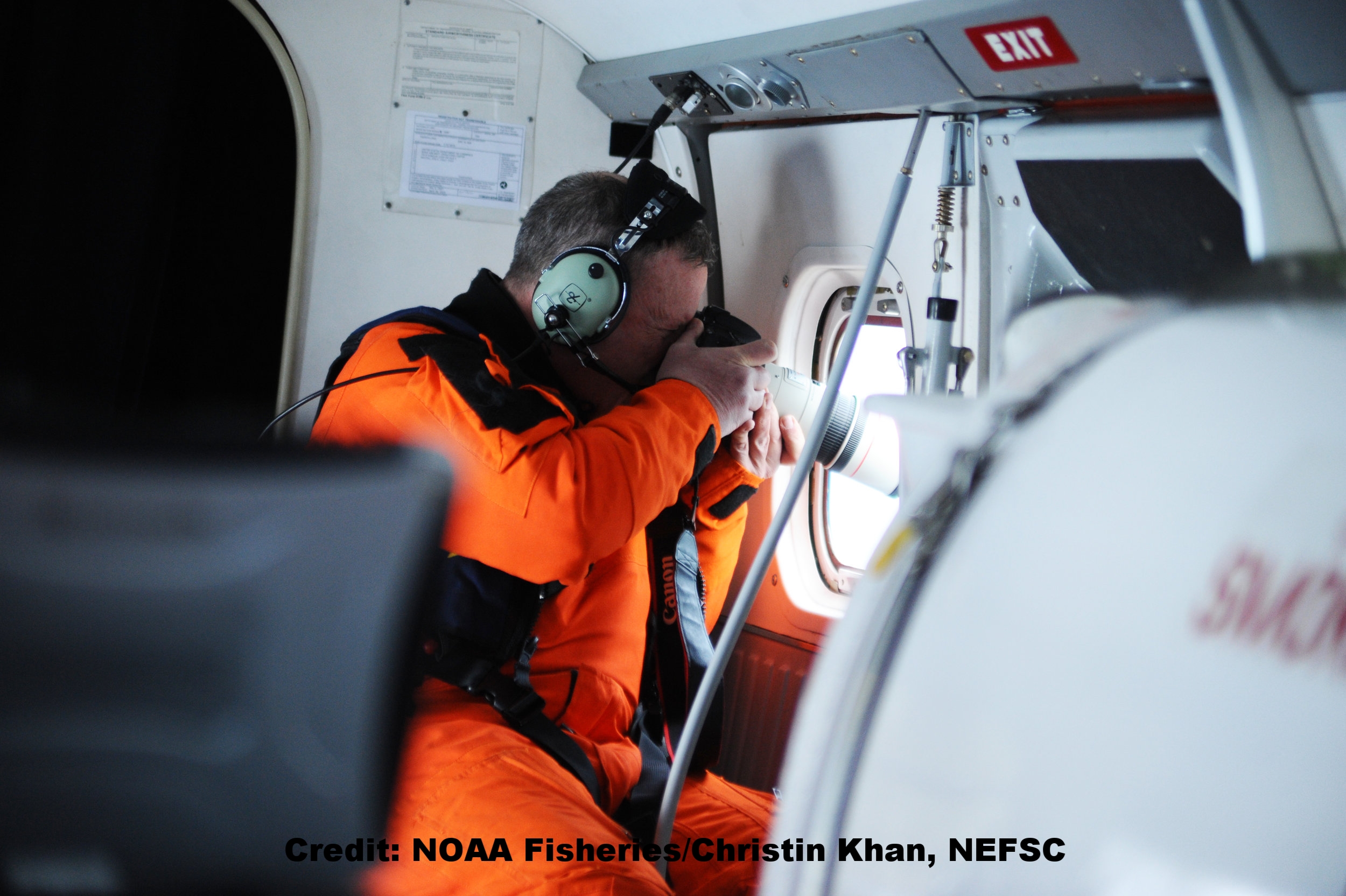
8 Things the Northeast Fisheries Observer Program Does for You
April 24, 2017
Some of the largest, most profitable fisheries rely on fishery observers to collect, process and manage data and biological samples from commercial fishing trips for stock assessment and management purposes. But, that’s not all they do. Here’s a small behind the scenes look at some of the other things Northeast Fisheries Observer Program (NEFOP) observers do that directly or indirectly impact you, your family and friends, your wallet, your lifestyle, your community and more.
Jawshank Redemption: Understanding shark behavior through science
October 26, 2016
Last year marked the 40th anniversary of the movie Jaws, regarded by many as “the movie that changed Hollywood.” While true, Jaws shaped more than just Hollywood. With its ominous, adrenaline pumping two-note score and imagery of a bloodthirsty, torpedo-shaped predator with rows of razor-sharp teeth, Spielberg’s film shaped our perception of sharks.
After Jaws, fear of the unknown arrested us, and our lack of knowledge helped demonize sharks. But the winds are shifting. New research initiated by the Smithsonian Environmental Research Center’s Fish and Invertebrate Ecology Lab aims to investigate habitat use, migration patterns, and species interactions of four underrepresented shark species found in the Chesapeake Bay and along the Atlantic Coast.
Students ASSEMBLE! How comics can help with science learning
September 14, 2016
Middle school can be a tough and unforgiving rite of passage, filled with raging hormones, ill-fitting highwater pants, voices akin to trumpet-wielding geese, and a multitude of distractions. Trying to learn while being swept up in puberty’s turbulence can be challenging. Equally challenging is trying to teach science to often-distracted tweens and teens. Right now, as most U.S. schools begin a new school year, some science educators might be looking for ways to engage their middle-school students with science. One science educator suggests meeting them where their interests lie – comics.
Shedding Light on Extreme Weather Events
Writer, editor and graphic designer
Summer 2016 - Featured in SERC's Summer Newsletter
In July 2002, record temperatures and drought caused 400,000 acres in Quebec to go up in flames. The jet stream channeled a thick plume of smoke over much of the East Coast, including Maryland some 900 miles away.
Pat Neale, senior scientist in SERC’s Photobiology Lab, remembers that summer. He said during the Quebec fires, the smoke made things in Maryland look hazy, but added, “What you didn’t realize was that part of the UV spectrum was almost completely wiped out”
Extreme events like heat waves, droughts, wildfires and heavy precipitation are on the rise thanks to climate change. Such events alter how much light can penetrate aquatic environments. Neale has been collecting solar spectral data from a monitoring system at the top of SERC’s meteorological tower since 1996. In his latest publication, Neale looks at how extreme events can change ultraviolet (UV) radiation and dissolved organic matter in lake ecosystems.
Please Do Not Disturb
Writer, editor and graphic designer
Summer 2016 - Featured in SERC's Summer Newsletter
What helps plant invasions? A recent online publication from former SERC intern Ben Sciance, senior scientists Don Weller and colleagues looked at how land use, shoreline armoring and other disturbances impact the common reed (Phragmites australis), an invasive plant in North American marshes. The team found that the prevalence of agriculture was the strongest predictor of presence and abundance of the common reed in the Chesapeake Bay. Why? Because farming activities release nutrients that promote establishment, growth and seed production. The team also discovered that the common reed was more frequent near shoreline armoring structures like riprap.
Controlling these invaders is tricky. The researchers suggest focusing on areas with low invasion, and include management strategies for reducing nutrient pollution, preserving natural shorelines and limiting shoreline disturbance.
New Science Art Exhibit Examines People, Nature and Conservation
May 6, 2016
This year’s theme for SERC’s annual Open House is “Ecosystem Conservation: Where do you fit in?” In the broadest sense, this question got me thinking about people, ecosystem research and conservation. How do we conserve ecosystems and make realistic and manageable policies? As a scientist, science writer/communicator and artist, I decided to explore these question through art, specifically mosaics.
Using art as a way to raise awareness, express one’s thoughts or as a way to create dialog is one of the most wonderful and powerful things about art. Humans have been creating art for some 40,000 to 60,000 years and this timeline could extend farther back as new techniques and technologies become available and new cave art discoveries are made. Over the past decade some field stations and laboratories have incorporated arts and humanities into their programs. Many see it as an opportunity to communicate an agency’s mission, the scientific process, science discoveries and complex scientific concepts or areas of study. A recent essay in the Ecological Society of America’s Ecosphere explores the convergence of science, art and humanities and why it could be important to sustainability, ecosystem stewardship, ecosystem services and conservation strategies in the future.
Amphibian Congregation: Sonic Songs of Spring
March 30, 2016
Sonic Cacophonies
It’s that time of year when much of the mid-Atlantic is waking up from a long winter’s slumber. Flowers are blooming, trees are budding, ospreys and eagles are nesting, and frogs are calling. Right now, the Smithsonian Environmental Research Center (SERC) is alive with the sonic cacophony of a two amphibians. Spring peepers (Pseudacris crucifer) and American toads (Anaxyrus americanus, formerly Bufo americanus) are shouting mating anthems from every available pocket of water. If you live east of the Mississippi River from Canada to Florida, you’ve likely heard their calls. But which is which? We’ve collected a few sound bites around SERC to help identify each amphibian’s call.
In the clip below, you’ll hear the short high-pitched chirping or whistling sounds of spring peepers and the slightly deeper, long drawn trill sounds of American toads.
In this clip, you’ll hear the same short high-pitched chirping or whistling sounds of spring peepers and slightly deeper, long drawn trill sounds of American toads. However, if you listen closely, you’ll also hear several high-pitched trill sounds that increase in pitch over the one to two second frog call. This call is a warning or alert call by spring peepers. Males emit this sound when another male has entered its territory or mistaken it for a female during an amplexus attempt. You can hear examples of this alert call near the 10 second mark through the 25 second mark.
Restrictions in Seaweed Agar-vate Scientists
December 17, 2015
Bivalves from Panama for Dermo disease study
Last week Nature magazine published a news piece about how supplies of agar, a research staple in labs around the world, are dwindling. Agar is a gelatinous material from red seaweed of the genus Gelidium, and is referred to as ‘red gold’ by those within the industry. Insiders suggest that the tightening of seaweed supply is related to overharvesting, causing agar processing facilities to reduce production. Most of the world’s ‘red gold’ comes from Morocco. In the 2000s, the nation harvested 14,000 tons per year. Today, harvest limits are set at 6,000 tons per year, with only 1,200 tons available for foreign export outside the country. In typical supply and demand fashion, distributor prices are expected to skyrocket. As a result, things could get tough for scientists who use agar and agar-based materials in their research.
Agar is a scientist’s Jell-O. Just like Grandma used to make Jell-O desserts with fruit artfully arranged on top or floating in suspended animation within a mold, scientists use agar the same way. Bacteria and fungi can be cultured on top of nutrient-enriched agar, tissues of organisms can be suspended within an agar-based medium and chunks of DNA can move through an agarose gel, a carbohydrate material that comes from agar. Agar and agar products are the Leathermans of the science world.
All About That Base…Pairs: Using DNA Barcoding to Identify Fish Gut Contents
November 10, 2015
Rob Aguilar of SERC’s Fish and Invertebrate Ecology Lab co-authored a DNA barcoding paper this past September in the journal Environmental Biology of Fishes. Rob spoke with us about his paper and the DNA barcoding work going on in the Fish and Invertebrate Lab. While the term DNA barcoding may seem difficult to understand, it’s easiest to think about it as a uniquely identifiable species level code.
Click the sound file below to listen to the interview.
Additional barcoding details are available in the full podcast transcript.
The Dark Side of Taxonomy: Part Three
October 31, 2015
The Devil You Know
In our last installment of The Dark Side of Taxonomy, we’ve saved one of the most fear inducing scientific names for last. We wouldn’t have done due diligence this Halloween season if we didn’t mention him. In this piece we present a small collection of organisms that in some instances have suffered the same etymological fate – a scientists with a proclivity for dark humor. Here we spotlight organisms that carry the infamous name of an angel who fell from grace.
The Dark Side of Taxonomy: Part Two
October 30, 2015
Darker Still
Delving deeper into the dark side of taxonomy, we forge forth into the ether to uncover obscure and wickedly inspired scientific names. What’s in a scientific name? As described in The Dark Side of Taxonomy: Part One, some scientific names for organisms have dark and twisted origins. In part two of this three-part series, we peek behind the thin gauze-like veil, fearlessly sifting through time and lore to deliver a new collection of gruesome scientific names. Here we share ancient tales of Greek mythology, an Italian literary genius from the Middle Ages and the unforgiving Underworld.
The Dark Side of Taxonomy: Part One
October 28, 2015
In the spirit of the Halloween season, we’ve decided to showcase some of the more darkly inspired scientific names. But first, what exactly is a scientific name, and how did it come to be? In the 18th century, Carl Linnaeus developed a hierarchical naming system known as Linnaean classification for categorization of organisms. As part of his classification system, Linnaeus introduced binomial nomenclature, a formal system for giving organisms a two-part scientific name. The first part of the name is a word that identifies the genus to which a species belongs. The second part of the name is a word that identifies a species within a genus. Scientific names are often in Latin, Greek or some other ancient or classical language, and may reflect some special aspect or feature of that organism. For example, an organism with stripes, bars or a mottled appearance may have a species name of variegatus, Latin for variegated.
However, some scientific names have Latin and Greek words that are less innocuous. Some words conjure up images of terror and the occult. When whispered, the names seem to slither like a snake over the tongue – sending chills down spines and making hairs on the back of the neck rise like ghosts from a grave. This week we delve into science’s darker and more twisted scientific names.
Good Thinking! — Science: A Work in Progress
October 6, 2015
I wrote this animated video script and created scene visualizations for the Smithsonian Science Education Center. These animated videos are meant to help middle school science teachers understand science concepts using the Next Generation of Science Standards (NGSS). I also wrote another animated video script about they myths and misconceptions about invasive species. Due to funding the video wasn't couldn't be made. Script and scene visualizations can be provided upon request.
Remembering Hurricane Katrina by Studying Marshes of the Future
August 28, 2015
"The Need for Healthy Marshes
Ten years ago, on August 28, 2005, Hurricane Katrina nicked south Florida and entered the heat-charged waters of the Gulf of Mexico, transforming from a Category 1 hurricane into a super-charged Category 5. In the early morning hours of August 29, it ripped through Louisiana and Mississippi. Thousands died, and hundreds of thousands of homes and businesses were destroyed. Today, much of the Louisiana and Mississippi coasts, and its people, are still recovering from the devastation.
When Katrina hit, some coastal marshes east of the Mississippi River lost approximately 25 percent of their area. In the decade that followed, salt marshes and wetlands in Louisiana have continued to disappear in some places, but not others. The scientific community soon zeroed in on keeping marshes healthy, since, as one scientist remarked “A healthy marsh is pretty resilient, A stressed marsh – storms will physically break the marsh down.” Marshes and wetlands are ecologically and economically important ecosystems. During storms they act like buffers, reducing storm surge and flood damage, but only if they’re healthy. The question is, what factors make a marsh strong or weak?"
Extravaganza Eleganza: Orchids on the Fashion Runway
August 18, 2015
"Last year, Pantone chose Radiant Orchid as their 2014 color of the year. Pantone is the authority on color. Their color choice affects a variety of industries from fashion and make-up to home interiors (e.g. paint, upholstery, etc.). Once again orchids have sashayed their way into our everyday lives and in very big ways. Journey with us as we explore just a few fabulously fierce fashion pop-cultural orchid moments.
Christian Dior’s to Die for Couture: Paris Haute Couture Autumn/Winter
Belgian designer Raf Simons joined fashion power house Christian Dior in 2012. Just two years later at the 2014 Paris Haute Couture fashion show, he wowed the audience with walls dripping with 150,000 live orchids and an equally jaw-dropping runway collection of embroidered blooms and floral-inspired silhouettes. The Fashion Channel said the show felt “divine and ethereal, with models resembling graceful nymphs walking elegantly in an antiseptic white circular Olympus with silver walls adorned with pristine white orchids.” C’est bon! We don’t think we could have said it any better!"
Bubblegum Pop to Punk and Heavy Metal: Orchids’ Mark on Music
August 18, 2015
"Research shows that music affects our brains and our bodies. It can make us laugh, cry, give us chills, empathize and remember events or single seemingly fleeting moments that we’ve long forgotten. When it hits the right cords, music can increase heart rate, dilate pupils, increase body temperature and release the neurotransmitter dopamine, a chemical which plays an important role in our brains, particularly the reward centers of the brain. The same has been said about orchids, the hunt for orchids and in Victorian era, the eroticism surrounding orchids."
Sexy, Scandalous and Dangerous: Orchids in Pop-Culture Literature
August 13, 2015
"There’s no denying, orchids are pretty darn sexy plants. And it because of their sex appeal, they’ve sashayed their way into just about every aspect of pop-culture. They’ve glammed their way into movies, TV, music, fashion and literature, and we didn’t even realize the spell they cast until it was too late. Bewitched, bothered and bewildered, we didn’t even realize how inescapable they are in our world. Here we explore a few examples of how orchids deftly made their way into pop-culture literature."
Orchids and Lullabies
August 10, 2015
"Orchids are cunning little creatures. They create elaborate ruses to puzzle insects, fungi and even (or especially) biologists. Here are a few poems we composed to honor the smartest plants on Earth."
A Dark Gothic Secret: North American Orchids and Their Pollinators
August 6, 2015
"Have you ever been at a stop light and seen a butterfly sampling nectar from flowers in small container garden? Maybe you’ve seen bees darting flower to flower as you tend your garden. Or maybe, as you walk the city streets, you see other insects whizzing about the flowering weeds that struggle to survive in the cracks of our concrete jungle. Based on these experiences, you might think that flowers only get pollinated during the day. Here’s a secret, and it’s a dark, gothic secret: Pollination also occurs under the veil of night. Some plants, like orchids and their pollinators, live a life less ordinary."
New to Science Blogging #9 – The Science Gumbo Blog
This piece is part of an ongoing guest series featuring new science bloggers by SciLog blogger Paige Brown Jarreau.
May 17, 2015
"What motivated you to start blogging about science? Why did you start a blog, vs. using only other newer forms of social media like Twitter?
A career change motivated me. I have been working as an academic research technician (in ecology) for the last 20 years. In that time I’ve seen all kinds of highs and lows in the academic research ecosystem. However, over the last 5 years I’ve seen unprecedented lows (scarce funding, few employment options, skewed academic structure, etc.), and it became abundantly clear a career change needed to happen. But to what? After reflecting upon my career interests, one thing stood out – I routinely seek opportunities to communicate my science and research experiences to lay audiences. Everything – the good, the bad and the ugly. So from the primordial ooze, The Science Gumbo Blog creeped out of the dark and murky waters, grew a pair of legs and walked the walk. I mean, how best to test drive a new career than to jump right in and do it?"
Clever Steps Are What You Take - Walking on the Marsh
April 27, 2015
"Walking through a tidal marsh can figuratively and literally be like dragging a tortilla chip through a 7-layer dip. Unlike the dip, destroying the layers or landscape of a marsh can cause serious problems for scientists studying the ecology and biogeochemistry of marsh systems."
Just Another #ManicureMonday for Women Scientists and Their Dirty Nails
February 23, 2015
"There are plenty of scientists who enjoy adorning their fingers and toes with nail polish, but for many of us there is a practical reason we forego gilding. That is, doing some kinds of science simply destroys manicures and pedicures. Whether it’s from wearing Nitrile (synthetic rubber) gloves all day, donning dive booties, deploying research gear (e.g. nets and samplers), scrambling around research boats, tromping around field sites (estuaries, streams, marshes and forests), or performing experiments in wet labs or outdoor mesocosms, hands and feet take a beating. Yet, we still use nail polish. We just use it in a different way."
Not Your Everyday Martha Stewart Glue Sticks: A piece about the role of creativity in science
December 19, 2014
"When I mention that we use “glue sticks” at the Smithsonian Environmental Research Center to help answer research questions about wetland ecology, I get looks of confusion and amusement. People often think I am using..."
Curiouser and Curiouser: A Motor at the Front?
February 18, 2014
"With its motor located near the bow (front) of the boat, the modern-day mullet skiff could have been a character in Lewis Carroll’s novel “Alice’s Adventures in Wonderland.” Similar to the unpunctual rabbit, vanishing cat and hookah smoking caterpillar, it seems illogical…or does it?"
High and Dry in the Chesapeake Bay: How an invasive marsh plant could leave many fishes and invertebrates homeless, hungry and vulnerable to predators
December 19, 2013
It’s no surprise that invasive species can dramatically alter an ecosystem. Often, invasive species outcompete native species and disturb ecosystems that have not evolved to handle the new intruder(s). One such invader is the introduced common reed (Phragmites australis australis).